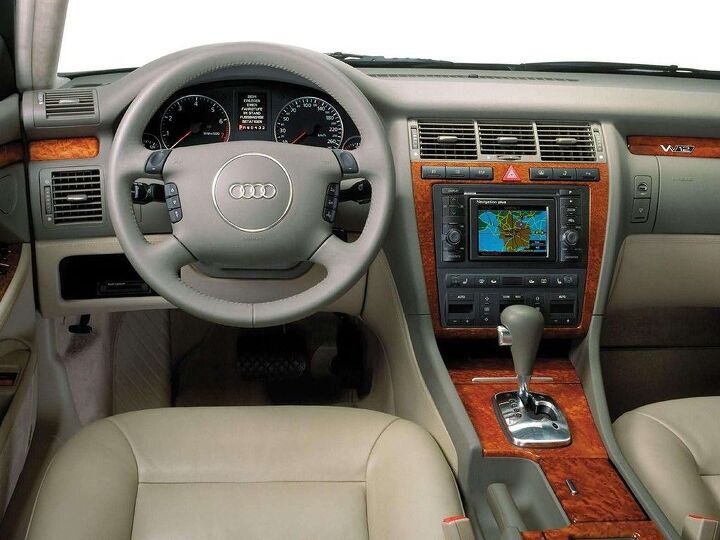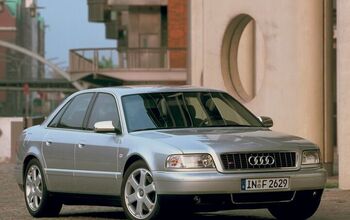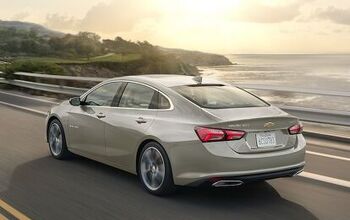Rare Rides: An Almost New Audi S8 From 2001 (Part I)

Rare Rides has featured the predecessor of today’s sedan previously, in a very pearly 1990 V8 Quattro. After Audi spent a few years unsuccessfully trying to sell its first-ever attempt at a flagship full-size sedan, it took the lessons learned from the D1 and developed the D2 A8 and S8.
Today we’ll focus primarily on the A8 foundations that made the S8 possible. Work on the D2 platform began in 1982 when Ferdinand Piech signed a development contract with Aluminum Company of America (you’d probably call it Alcoa). The goal of the agreement was the use of aluminum technology to design a sedan that was lighter than other cars of a similar size class.
The weight saving via lighter metals would make up for the heavy Quattro all-wheel-drive system, which was a given in any flagship Audi. Not eager to repeat the same platform sharing mistake as with the V8 Quattro, the D2 was not an evolution of the steel D1, but rather an entirely new aluminum monocoque platform. Audi dubbed it the ASF, or Audi Space Frame. The Space Frame’s logo was proudly displayed on the lower b-pillars of every A8.
The new A8 was presented at the 1994 Geneva Auto Show and went into production later that year. At the start Audi’s new offering wasn’t quite ready for North American duty: A8 did not arrive in the US until the 1997 model year, and when it did it was more limited in scope than other markets. North American bound A8s were all equipped with Quattro all-wheel drive and (for obvious reasons) a five-speed automatic transmission. While markets outside of North America were offered V6 engines of gasoline and diesel persuasion, all North American A8s were equipped with Audi’s 4.2-liter V8. All North American examples were standard-wheelbase through 1999, but the long-wheelbase arrived for 2000. The L offered five additional inches of rear legroom and meant the lineup was more competitive with offerings from BMW and Mercedes-Benz that came with length. An ultimate version with a 6.0-liter W12 engine was offered from 2001 and was very expensive.
We’ve got the foundations covered, so in Part II we’ll talk about Audi’s transformation of the A8 into a high-performance sports sedan. And I’ll show you the S8 for sale that’s hardly been used.
[Images: Audi]

Interested in lots of cars and their various historical contexts. Started writing articles for TTAC in late 2016, when my first posts were QOTDs. From there I started a few new series like Rare Rides, Buy/Drive/Burn, Abandoned History, and most recently Rare Rides Icons. Operating from a home base in Cincinnati, Ohio, a relative auto journalist dead zone. Many of my articles are prompted by something I'll see on social media that sparks my interest and causes me to research. Finding articles and information from the early days of the internet and beyond that covers the little details lost to time: trim packages, color and wheel choices, interior fabrics. Beyond those, I'm fascinated by automotive industry experiments, both failures and successes. Lately I've taken an interest in AI, and generating "what if" type images for car models long dead. Reincarnating a modern Toyota Paseo, Lincoln Mark IX, or Isuzu Trooper through a text prompt is fun. Fun to post them on Twitter too, and watch people overreact. To that end, the social media I use most is Twitter, @CoreyLewis86. I also contribute pieces for Forbes Wheels and Forbes Home.
More by Corey Lewis
Latest Car Reviews
Read moreLatest Product Reviews
Read moreRecent Comments
- Theflyersfan With sedans, especially, I wonder how many of those sales are to rental fleets. With the exception of the Civic and Accord, there are still rows of sedans mixed in with the RAV4s at every airport rental lot. I doubt the breakdown in sales is publicly published, so who knows... GM isn't out of the sedan business - Cadillac exists and I can't believe I'm typing this but they are actually decent - and I think they are making a huge mistake, especially if there's an extended oil price hike (cough...Iran...cough) and people want smaller and hybrids. But if one is only tied to the quarterly shareholder reports and not trends and the big picture, bad decisions like this get made.
- Wjtinfwb Not proud of what Stellantis is rolling out?
- Wjtinfwb Absolutely. But not incredibly high-tech, AWD, mega performance sedans with amazing styling and outrageous price tags. GM needs a new Impala and LeSabre. 6 passenger, comfortable, conservative, dead nuts reliable and inexpensive enough for a family guy making 70k a year or less to be able to afford. Ford should bring back the Fusion, modernized, maybe a bit bigger and give us that Hybrid option again. An updated Taurus, harkening back to the Gen 1 and updated version that easily hold 6, offer a huge trunk, elevated handling and ride and modest power that offers great fuel economy. Like the GM have a version that a working mom can afford. The last decade car makers have focused on building cars that American's want, but eliminated what they need. When a Ford Escape of Chevy Blazer can be optioned up to 50k, you've lost the plot.
- Willie If both nations were actually free market economies I would be totally opposed. The US is closer to being one, but China does a lot to prop up the sectors they want to dominate allowing them to sell WAY below cost, functionally dumping their goods in our market to destroy competition. I have seen this in my area recently with shrimp farmed by Chinese comglomerates being sold super cheap to push local producers (who have to live at US prices and obey US laws) out of business.China also has VERY lax safety and environmental laws which reduce costs greatly. It isn't an equal playing field, they don't play fair.
- Willie ~300,000 Camrys and ~200,000 Accords say there is still a market. My wife has a Camry and we have no desire for a payment on something that has worse fuel economy.





































Comments
Join the conversation
A friend traded his A4 for his sister's A6 ( it was too big for her ) then, a year later, traded the A6 for his parent's neighbour's S8, which was too big for the wife's liking. A4 to S8 in a year - for free. I was with him when the driver's door suddenly decided to not latch anymore: a CDN$900 fix. The central HVAC tunnel would often fill with water, too, even with the windshield drains absolutely clear. Seeing the engine that far forward in the engine bay was always off-putting for me. Otherwise a great car, if you can afford the upkeep.
I loved these when they were current. Having owned a 2002 S4, however, has all but ruined Audi's for me, this one included. Were they as unreliable as the B5s of the day?